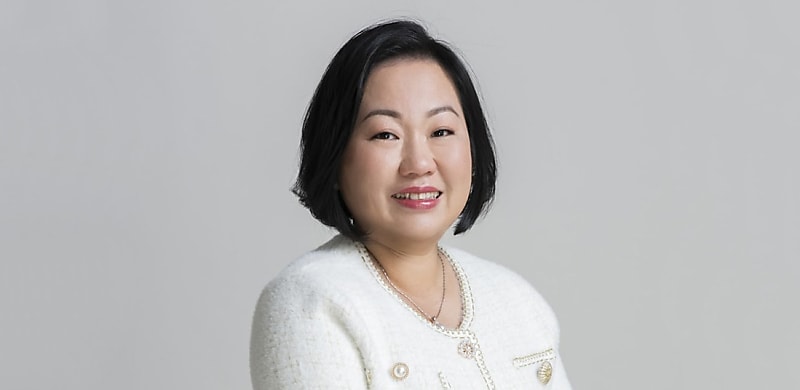
A new report shows an increasing number of key workers and regional Australians using the federal government scheme, launched in 2020.
The federal government’s Home Guarantee Scheme was used by 43,800 first home buyers – roughly one in three – in the financial year 2023–24, according to the most recent Trends and Insights report from national housing authority Housing Australia, released on Monday.
Housing Australia said nearly nine in 10 (88 per cent) of the 50,000 available spaces in the scheme were taken up during FY23–24, representing a 34.7 per cent increase on the number of guarantees issued in FY22–23 (32,500).
Jennifer Chew, Housing Australia chief program officer of home ownership, said the Trends and Insights report showed the scheme was fulfilling its purpose.
“Amid rising living costs and housing affordability challenges, the Home Guarantee Scheme has supported thousands of eligible home buyers to navigate the market and achieve home ownership sooner,” Chew said.
“The strength of the scheme is further demonstrated by the number of participants that have transitioned out of the scheme due to equity built up.”
The authority also noted the contribution of the broker channel, telling The Adviser that 78 per cent of all home buyers supported by the scheme utilised brokers for their applications with participating lenders, up from 50 per cent in the scheme’s first year of operation.
Previously, brokers have acknowledged the scheme’s benefits, but also argued more can be done, such as reviewing and increasing the price caps aligned to the growth of the market.
Encompassing the First Home Guarantee (FHBG), the Regional First Home Buyer Guarantee (RFHBG), and the Family Home Guarantee (FHG), the Home Guarantee Scheme provides eligible borrowers with incentives such as access to mortgages with lower deposits, as well as removing the requirement of paying lenders mortgage insurance (LMI).
During FY23–24, 35,000 places were made available under the FHBG, 10,000 places under the RFHBG, and 5,000 places under the FHG. According to Housing Australia, 18,000 regional Australians were supported by the scheme, including 13,000 through the RFHBG.
The Trends and Insights report also said more than one in four (11,300) guarantees were issued to key workers such as teachers, nurses, and childcare workers in FY23–24, a 28 per cent increase on the number of key workers supported in FY22–23 (8,800).
Jocelyn Martin, Housing Industry Association (HIA) managing director, said it was encouraging to see the scheme have a positive effect on a broad range of Australians from different areas and age groups, not just high-income earners living in cities.
“It is particularly pleasing to see that regional Australians comprised a significant portion of eligible home buyers utilising the Scheme,” Martin said.
“These positive inroads into improving housing outcomes, prove what we have said all along, that these types of Schemes work and should be expanded and supported for those who want to achieve the Australian dream of owning their own home can do it.”
Federal Housing Minister Clare O’Neil MP, who took over the portfolio from Julie Collins at the end of July, also said the scheme’s benefits were flowing to areas that need it.
“In the midst of a housing crisis, Labor’s expanded Home Guarantee Scheme is helping more people into their own home. I’m particularly happy to see that nurses, social workers and aged care workers have benefited so much from the scheme, with over a quarter of all transactions going to key workers,” O’Neil said.
“It’s a testament to the scheme’s effectiveness that one in three first homebuyers are now supported by the scheme, but it also reflects the fact that higher house prices mean more people need a leg up to buy their own home.
“That’s why it’s so important that the Coalition and the Greens political party stop blocking our Help to Buy scheme in the Senate, which will help an additional 40,000 low‑ and middle‑income Australians, including nurses, early educators and teachers, to own their home.”
These comments come after shadow housing minister Andrew Bragg said more needs to be done in an exclusive interview on The Adviser’s In Focus Podcast in August, indicating the Liberal Party’s intention to bring a “much stronger” supply policy to the next election.
“The Labor Party have had four housing policies. They’ve had to Help to Buy – a scheme where the government owns 40 per cent of your house. That was the centrepiece of their last election campaign launch. They haven’t even brought that bill into parliament for a debate or for a vote to they’re obviously ashamed of that policy,” Bragg said.
“Secondly, they’ve got the housing targets, which we just discussed have failed.
“Thirdly, they got the Housing Australia Future Fund, which is a multibillion-dollar boondoggle fund, which has built no houses.
“And then they’ve got – what I would say, their worst policy (which is big call) they’re Build to Rent tax concessions, which is about getting foreign fund managers to build and own Australian housing. So, an Americanisation of our housing stock.”
[Related: Is the Great Australian Dream ‘dead’?]
 Login
Login











JOIN THE DISCUSSION